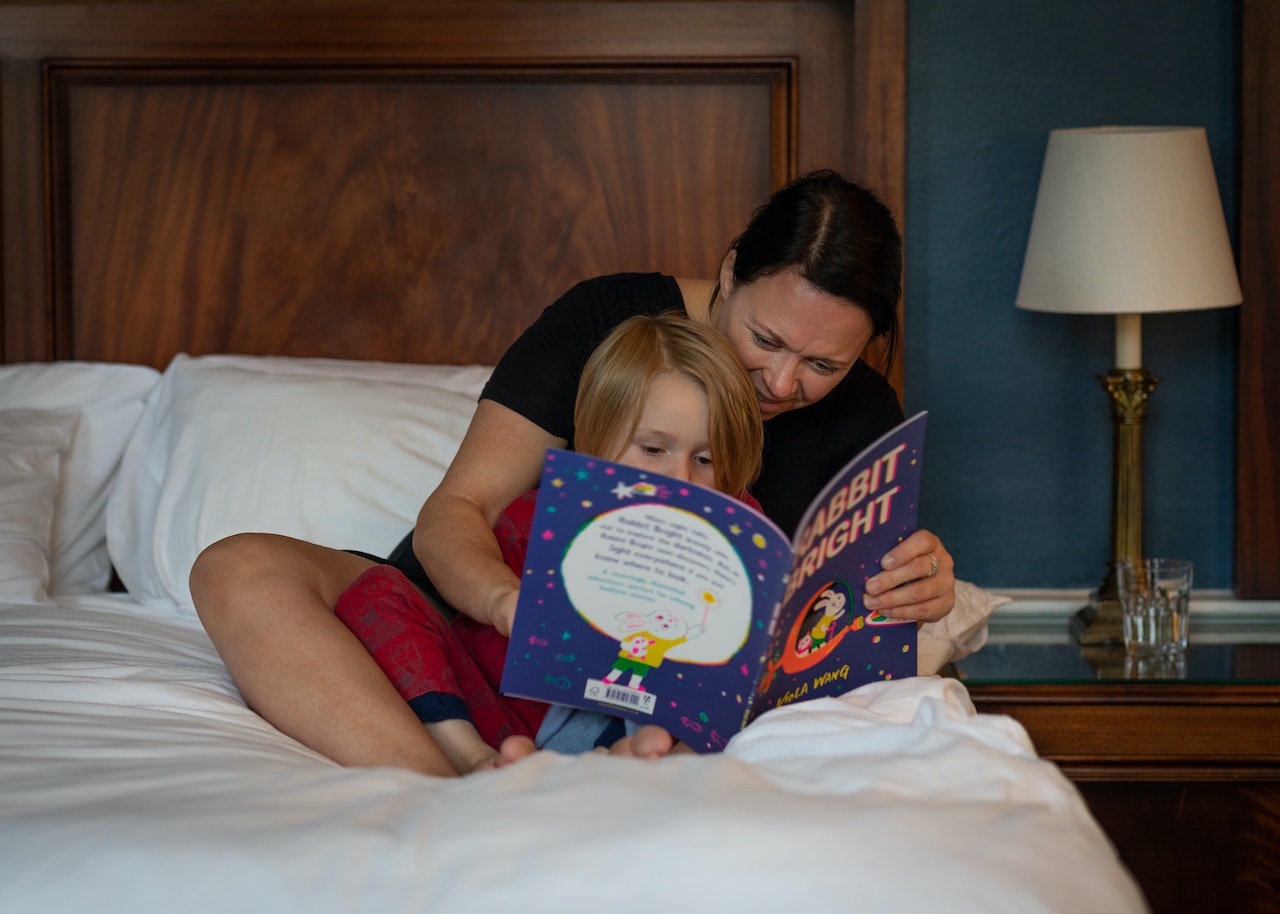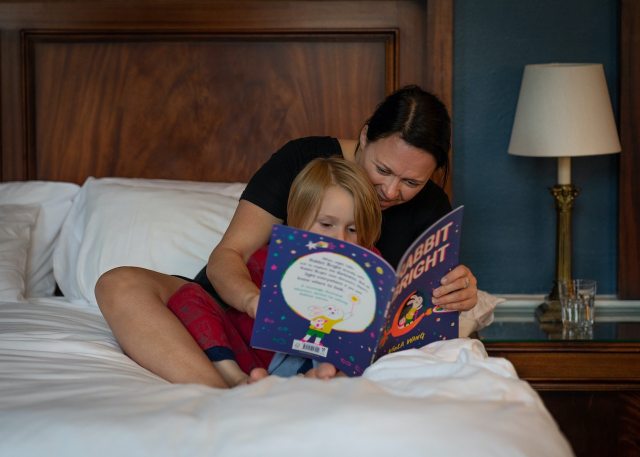
In the land of kids and monsters, Sleep Monster wouldn’t let anyone sleep a wink. Although Sleep Monster said it was fun not to sleep, he was telling a lie. Kids and monsters alike were tired and cranky, but no one knew what to do.
And so begins the saga of the Sleep Monster who discourages sleep and well-being for everyone around him. Sleep Monster is related to the Worry Monster who appears in the author’s popular book on children’s anxiety. Now the author addresses ways to tame the sleep monster as another important health focus for families.
The Importance of Sleep in Children
Sleep is an essential building block for your child’s mental and physical health. Scientists know that a child who consistently gets a good night’s sleep is more creative, can concentrate longer, can solve problems better, is able to remember new things, has more energy, has a more robust immune system, and can create and maintain good relations with others.
But, according to a study by the American Academy of Pediatrics, almost half of American children do not get enough sleep. The risk factors for sleep-deprived children are great. Many of these children show signs of increased irritability, stress, forgetfulness, problems learning, low motivation, and high levels of anxiety. Often sleep-deprived children’s behaviors will mimic ADHD leading to incorrect diagnoses and treatment. As if these issues weren’t enough, prolonged sleep deprivation can worsen existing behavior problems and contribute to depression and anxiety.
Physically, kids who do not get enough sleep are at risk for diabetes, high blood pressure, smaller stature, weakened immune system, and obesity. According to sleep experts, the link between obesity and weight gain is related. Along with fast food and insufficient exercise, lack of sleep is a factor in weight gain.
How Much Sleep Does Your Child Need?
The National Sleep Foundation recommends the following guidelines for the amount of sleep needed per day (naps included):
- Toddlers: 11-14 hours
- Pre-schoolers: 10 -13 hours
- Children 6-13 years: 9 -11 hours
- Teenagers 14-17 years: 8 -10 hours
What Interferes with a Good Night’s Sleep?
Sleep is a complex, yet imperative biological function. For children, there are many factors that interfere with sleeping well, with one of the biggest problems being screen time. According to the National Sleep Foundation, using electronic devices before bed (especially small screens held close to the face) interferes with the release of melatonin—the hormone that helps us sleep. This is mainly due to the blue light emitted from the screen, which can be the equivalent of drinking a cup of coffee. Parents wouldn’t say, “Why don’t you have a cup of coffee and go to bed.” Yet when screens are allowed in the evening, the effect can be similar.
Other risk factors include living below the poverty line, lack of caregiver information about the importance of sleep, adverse home life, and mental health issues. One of the biggest mental health issues is anxiety—the number one referring problem to mental health providers in the world.
Anxiety is like a constantly dripping faucet. Worrying thoughts come into the brain like water from a leaky faucet and it seems impossible to stop them. Soon the thoughts get to a very high level and will cause real damage if not controlled. The anxious dripping thoughts are often worse at night. The anxious child lays awake in bed, unable to shut off the worries and unable to sleep. Then he worries that he is not sleeping. It is a vicious cycle. The book, Shrinking the Worry Monster, A Kid’s Guide for Saying Goodbye to Worries, addresses the topic of kids’ anxiety and offers many concrete solutions to lower worry.
Ways to Tame the Sleep Monster
It is important to carry out good sleep hygiene, which refers to healthy sleep habits. The behaviors and choices your child makes during the day and especially at night affect how well he or she sleeps. Seattle Children’s offers an excellent handout on tips to help children sleep well. Some of their tips plus other ideas are described below.
1. Keep consistent bedtimes and wake times every day of the week. Changing times on the weekend can throw a sleep schedule off.
2. Keep your child’s bedroom cool, quiet, and comfortable. Make sure the mattress and pillow are of good quality.
3. Keep your child’s bed for sleeping only. Discourage the use of electronic devices or reading in bed, so the bed won’t become associated with wakefulness.
4. Limit electronic devices and anything with high stimulation to within an hour of bedtime.
5. Bedtime should include a predictable sequence of events like bath, brush teeth, quiet talk, story, and lights out.
6. Relaxation techniques have become more popular and effective. Try deep, slow abdominal breathing or remembering positive scenes from past events. There are a number of apps that offer mediation for children’s sleep.
7. Turn the clock away from view. Clock watching at night only increases anxiety about not sleeping.
8. Physical exercise and being outside are important every day, but don’t exercise within 2 hours of sleep time.
9. Security objects at bedtime can be helpful.
10. Limit caffeine and soda after 2 p.m. Caffeine can fragment sleep.
11. Worry time should not be at bedtime. There are a number of wonderful techniques for handling worries in children. In addition to the author’s book, her blogs include articles on how to build a Worry Box and how to use Worry Time. Do not let anxiety interfere with your child’s sleep. Anxiety is controllable.
Good sleep is essential for all kids (and adults). It’s imperative to discuss why sleep is important, how sleep deprivation hurts kids, sleep requirements, and offers concrete tips on ways to tame the sleep monster. Just like the Worry Monster, the Sleep Monster can be managed. Hopefully, the end of our story could be—In the land of kids and monsters, everyone sleeps well.











